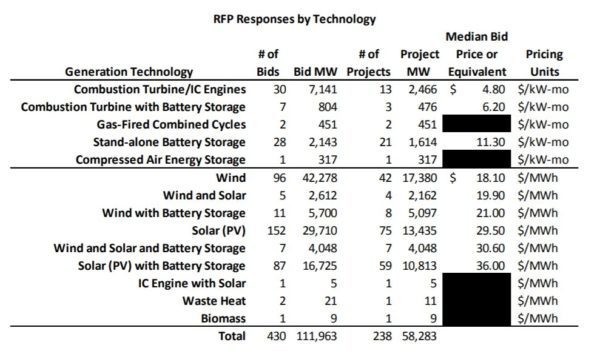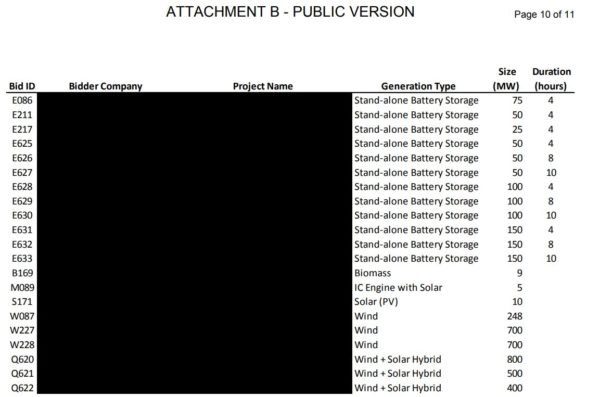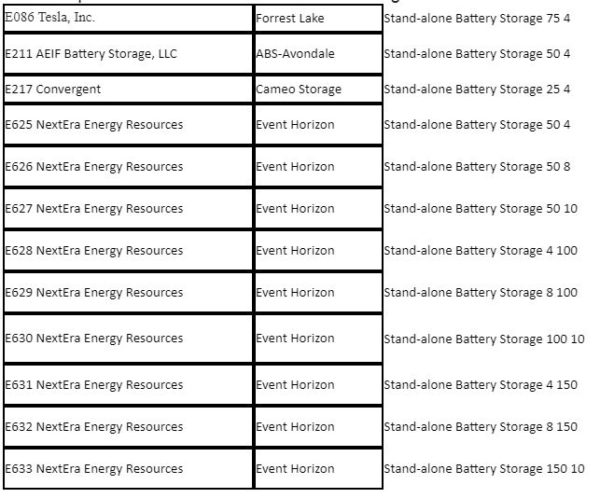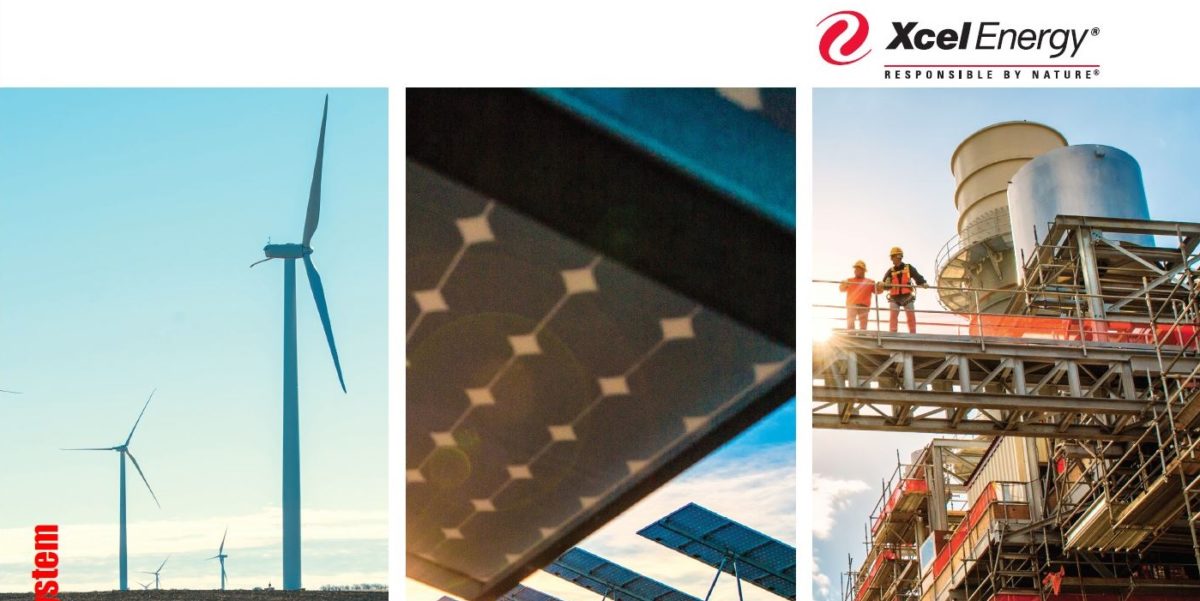Currently, the world’s largest operating battery is located in Australia – a 100 MW/129 MWh battery located at the Hornsdale Power Reserve built by Tesla. The largest battery (or series of batteries) under construction is a 200 MW/800 MWh vanadium flow battery located in China.
In December of 2017, Xcel Energy released a collection of hundreds of bids for its latest solicitation that set the analyst world on fire, largely because solar and wind median prices are 2.95¢ per kilowatt-hour (kWh) and 1.81¢/kWh, respectively – meaning that half the bids received were at prices lower than these.

What really caught everyone’s attention though was the price of the energy storage that complemented these wind and solar bids. The wind plus battery storage bid increased from 1.81¢/kWh to 2.1¢/kWh – less than 0.3¢/kWh (less than a third of a penny per kWh!) to add energy storage, and solar increased from 2.95¢/kWh to 3.6¢/kWh – 0.65¢/kWh to add storage.
This isn’t too far from the Arizona bid we saw offer 3¢/kWh for 100 MW of straight solar, and ”less than 4.5¢/kWh‘ for 30 MWh worth of that solar coming from a battery – a 1.5¢/kWh adder.
What caught our attention, and what may not have been fully appreciated yet is the size of some of these battery bids.

The first half of the storage bids above – the stand alone portion – may not get the same consideration (see pages 4-8 of the solicitation report) as a solar or wind+storage project, however, they still may be considered a part of Phase II of the bid. However, those stand alone batteries – eight of them in total – starting with the 50 MW/8hr duration might just be tied with the largest in the world.
That 50MW/8hr battery would be tied with the Tesla Australia batteries in terms of total MWh that could be delivered (400MWh). The 150 MW with a 10 hour direction would have a 1500 MWh rating. That would be the largest planned anywhere in the world at this moment – and four of the batteries on that list would qualify for that world’s largest crown.
Since these projects have a goal of completion before 2023 – in order to take advantage of various federal tax benefits before they expire – there will probably be other projects built and planned of similar, or larger size before that time frame. However, we should take two strong lessons from this document.
- Project developers are already looking at gigawatt-scale battery installations. It was just 2017 where the U.S. saw it first full year totalling 1 gigawatt-hour of storage.
- The price of electricity at these new energy storage projects, when paired with sufficiently large solar/wind, will be far cheaper – 1/3 to 2/3s of a penny per kWh – than anyone yet has modeled.
Combining this data with IRS support for energy storage retrofits, California pushing solar+storage for the duck curve and FERC opening markets to energy storage at the federal level, this means that natural gas peaker plants could die off faster than previously expected, and that the U.S. being powered 80% wind+solar with 12 hours of energy is an future that grows more likely by the day.
UPDATED: An eagle eyed reader of pv magazine’s, John G, discovered that NextERA is in fact the bidder in most of these largest batteries ever bid, with Tesla, Convergent and AEIF sneaking in also.

This content is protected by copyright and may not be reused. If you want to cooperate with us and would like to reuse some of our content, please contact: editors@pv-magazine.com.








It would be a poor economic and environmental decision to contract for a 50-100 MW battery with 8 or 10 hours of storage. A pumped storage plant would be a far better deal, and Colorado has options for it.
Any particular favored sites? Although it seems like the geography here favors pumped storage, it seems like it would be really challenging to overcome opposition to do anything in wilderness recreational areas in the front range. A lower reservoir to go along with Barker Reservoir in Nederland? My naive assessment is that this would have negligible impact on safety, the environment, the population, and recreational activities. It would only require rerouting Hwy 119 to climb past the lower dam and alongside the lower reservoir, but maybe the necessity to have underground electrical transmission back to Boulder would break the deal